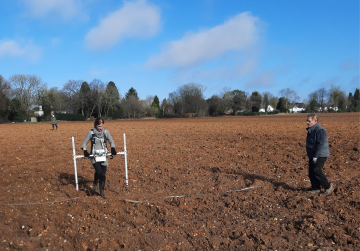Geophysical Survey and Fieldworking Report of Neale’s Field, Chipstead 2022
In March 2022, a small team of volunteers from Surrey Archaeological Society carried out a geophysical magnetometry survey and fieldwalking exercise on Neale’s Field, Chipstead as part of a small community project. This work was undertaken in order to investigate an unusual concentration of early metal-detecting finds, most notably a number of rare 15th century coins, which led to speculation of the site being the possible location of a medieval fair which was recorded at Chipstead from the 13th century, and to define, date and characterise the site.



